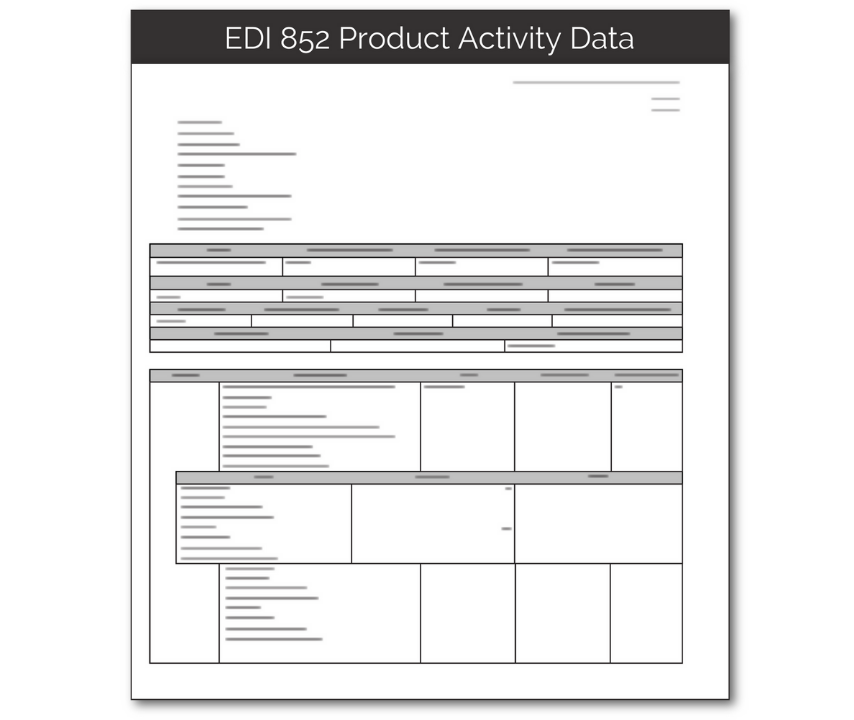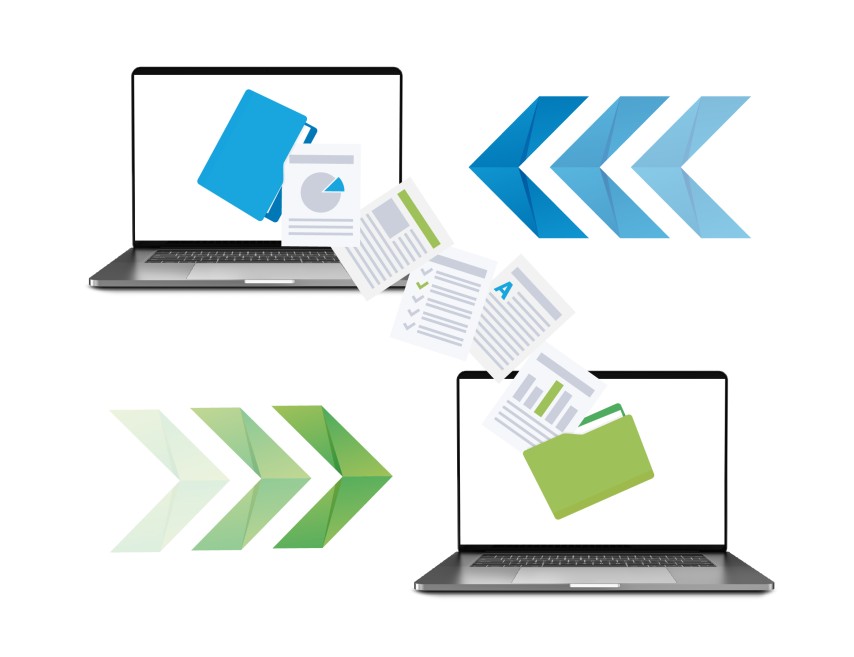EDI 852
Product Activity Data

What is an EDI 852?
EDI 852 is also known as a Product Activity Data report. This EDI transaction set is used primarily to share data related to inventory positions and movements (such as sales and restocking), between suppliers and retailers. EDI 852 plays a major role in enhancing supply chain visibility and is especially helpful for those using Vendor Managed Inventory and Scan-Based Trading approaches.
EDI 852 documents follow the x12 format set by the American National Standards Institute (ANSI), a not-for-profit organization that regulates EDI formats in the U.S.
What are the Essential Components of EDI 852?
EDI 852 can include different product details, depending on the needs and stocking strategies of a given trading partner. That said, common components of EDI 852 include:
- Item details, such as SKU or UPC
- Quantity of products sold, reported in units and/or dollars
- Number of sales losses due to stock-outs
- Current on-hand inventory
- Historical data, such as sales from the previous period
- Sales by location

How Do I Use EDI 852?
Unlike other EDI documents, Product Activity Data reports are usually sent periodically based on a schedule (daily, weekly, biweekly, etc.), rather than being triggered by a specific event in the supply chain. EDI 852 can give suppliers a better understanding of inventory movements, such as which products are moving faster or slower. EDI 852 can be sent for each SKU at the store-level, giving suppliers detailed information about individual product demand in specific markets/locations.
What are the Benefits of EDI 852?
Suppliers can use EDI 852 to help improve sales and marketing, optimize inventory levels, and schedule future shipments to retailers. As a result, both the suppliers and their customers can reduce inventory costs while increasing profitability. EDI 852 is especially helpful for partners using collaborative replenishment, as it helps to strengthen the partner relationship through better forecasting, reduced inventory turns and investments, and fewer stock-outs.
For those using a Scan-Based Trading (SBT) strategy, this information can help the supplier or manufacturer choose different product mixes based on inventory movement at the individual store level. Because retailers don’t pay for SBT products until after an end-consumer sale, EDI 852 can provide the insight needed to prevent both stockouts and overstocks that negatively impact revenue.
Using EDI to transmit this data offers multiple benefits. EDI document automation helps to streamline partner communications, leading to better, easier relationships between retailers and vendors. For those using inventory movement data to determine replenishment schedules, accurate data is imperative; Electronic Data Interchange helps ensure that accuracy by eliminating the need for manual retyping. Plus, EDI documents are more secure and reliable than email, fax or paper documents.

